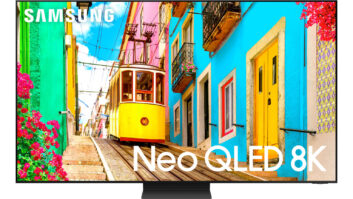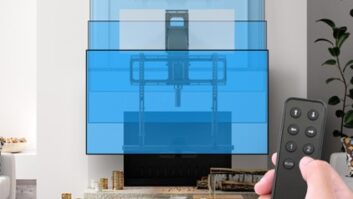Top-tier flat-panel television brands continue to dominate sales in most A/V specialty stores, but lean inventory levels and shrinking small-screen LCD TV assortments have some dealers starting to look for alternate resources this year.
With a few exceptions, retailers operating in the A/V specialty channel of trade continue to work almost exclusively with the top-tier brands they have relied on for years, citing better profit margins, relatively stable pricing practices, and a general preference among more knowledgeable and affluent customers for established name-brand products.
More importantly, some specialty dealers said they remain wary of doing business with a new start-up flat-panel supplier due to uncertainty over the future lifespan of the company and the new supplier’s ability to provide adequate support to satisfy both the dealer and the end user over the long term.
For similar reasons, a majority of the A/V specialty accounts polled said they would refrain from bringing in private label sets on their own from Asian flat-panel manufacturing sources. A few, however, said they would likely experiment this year with private-label brands or model exclusives from some second- and third-tier suppliers through arrangements made in their buying group associations.
As examples, Nationwide Marketing Group recently told members that it has arranged to carry a new exclusive Go- Video-branded line of LCD TVs from Soyo Group, and will carry some of the first flat-panel TVs under the resurrected ProScan brand, which was recently licensed by On International of Korea from Thomson.
Similarly, the NECO Alliance group, a unit of Nationwide serving A/V appliance dealers in the Northeast, has arranged to supply members with flat-panel TV models from Akai, Polaroid and Westinghouse. Although those deals were not necessarily exclusive to the NECO members, Polaroid has made some special distribution arrangements available to NECO members in the past.
“We’ve done well with Akai, Westinghouse and Polaroid,” said Mel Hunger, NECO Alliance executive director. “They’ve been good stable brands for us. They offer us a product we can show to those customers that come in looking for a particular screen size and a particular price point that won’t fit with a name-brand line, like a Sony or Panasonic.”
Among specialty A/V dealers, H.H. Gregg and BrandsMart have done reasonably well bringing in newer flat-panel brands to both meet supply needs and to establish some opening price points to fill out expanding merchandising assortments, analysts and vendors said.
A/V specialty chain Tweeter is looking to bring in a newer flat-panel brand or two to supply smaller sub-26-inch LCD TV screen sizes, which many of the top-tier brands are starting to step away from this year, as pricing continues to compress.
“I’ve had conversations with a few companies,” said Frank Roshinski, Tweeter senior merchandising manager. “I’m not really looking for a supplier on a low-end 32W-inch LCD or 42W-inch plasma panel, but I am looking for a supplier of small 16:9 and 4:3 LCDs that are already price sensitive. I am being careful, though, because I want to be sure that whatever brand I take is going to be around in a year or two.”
As a result, Roshinski said he would like to use a vendor to either bring in product under his own brand or to hit key price points in smaller screen LCDs. He said he is looking toward second-tier suppliers like Akai, Audiovox and Westinghouse, which have reasonably well-established brands and/or well-known industry veterans managing the companies. Alternatively, he said, Tweeter might bring in a private-label brand coordinated by the new Pro Group management team.
“I hate sending people up the street for secondary purchases,” Roshinski said. “Private labeling could be a good option for small-screen LCD TVs, because if you’re going to hit a price point and take subdued margins, the last thing you want is to be cross-shopped on it, too.”
Jim Pearse, Ultimate Electronics merchandising VP, said that his chain carries the Akai line to offer a competitive price point, primarily in 42W-inch plasma models.
“We want to maintain an aggressive price point in the marketplace,” Pearse said. “Price continues to be very, very important to some consumers.”
Meanwhile, dealers said tight inventory levels on most plasma models since the 2005 holiday selling season has created an artificially high demand for LCD TVs.
Kari Seward, marketing and merchandising manager of Bjorn’s AV in San Antonio, said plasma inventory levels continue to be running very tight from her core suppliers, Pioneer Elite, Samsung, Toshiba and Fujitsu, and as a result LCD TVs are winning the market share race in early 2006 by default.
“It’s an availability issue. There haven’t been a whole lot of options for us, so the transition to LCD has been happening a little quicker for us, simply because we need to fill up our slots,” she said. “As prices have come down as quickly as they have, up to a 42W-inch LCD seems to be the way most people are going. The 50W-inch and larger sizes are really still plasma as far as affordability is concerned.”
Franklin Karp, president of New York-based Harvey Electronics said, “We’re still running into obstacles with production issues that some of the manufacturers are having, and the thing that never ceases to amaze me is that even though there are no goods, the prices are still going down. In hindsight, I think everyone of the manufacturers would have sold the same level of goods last year, even if they hadn’t cut their prices.”
Karp said Harvey could look at bringing in other vendors, but “everybody seems to be in the same boat, and we don’t like to function that way,” explaining that Harvey will only carry select high-performance product lines to cater to its discerning customer base.
Ken Yessin, president of Brookfield, Conn.-based A/V specialty store Sounds Incredible, said that sales of 32W-inch and 40W-inch LCD TVs were seeing strong growth so far this year, and plasma sales were also growing, though at a slower pace. He said that his store has been able to get plasma products under the Mitsubishi, Fujitsu and LG lines, and, recently Sony opened up its pro goods line of plasma display panels to help meet demand.
Yessin said he was able to plan his orders last year to ensure he had enough supply during the holidays, but added that in the current price cutting environment it can be risky to stock too heavily.
“If I have a vendor that’s not going to price protect me for almost as long as I own the product, then I can’t really buy much of it for inventory because they change the prices all of the time,” Yessin said.
In larger screen sizes, Sony and Panasonic have made significant advances in sales or LCD and plasma TVs, respectively, since last fall.
Specialty retailers have cited Sony’s 40W-inch XBR LCD as being a huge success for delivering high-performance sets, and a 40W-inch screen size at a $3,499 retail price. Panasonic has been dealing with tight inventory levels since dropping the price on its plasma line last fall. Its new line is expected to spark higher demand levels when the model line transition begins next month, dealers said.
“Sony’s 40XBR LCD is our best seller overall right now. It’s got a good price for what it is at $3,499, and by default because we don’t have Panasonic’s models in stock to compete with it, that tends to be the model the guys go to to sell,” said Tweeter’s Roshinski. “I’ll be interested to see how it does in a month when the new Panasonic plasma models start showing up.”
A newer trend to hit the flat-panel TV business recently has been the emergence of non-traditional CE accounts “dabbling in LCD TV sales,” especially in the smaller screen sizes, observed Steve Kovsky, senior analyst with market researcher Current Analysis.
Kovsky said such atypical CE accounts as Home Depot and regional department stores including Kohl’s are selling aggressively priced smaller-screen LCD TVs from such newer brands as Hisense and such well-known brands as Magnavox.
“We do see some of the newer brands gaining traction now that they’ve been around a year or so,” Kovsky said. “The big success story in the fourth quarter was Sony getting back into the market and beating Sharp at its own game. But there still is very robust demand for the name brands. They’ve shown that they can charge a premium and consumers will continue to fork it out.”













